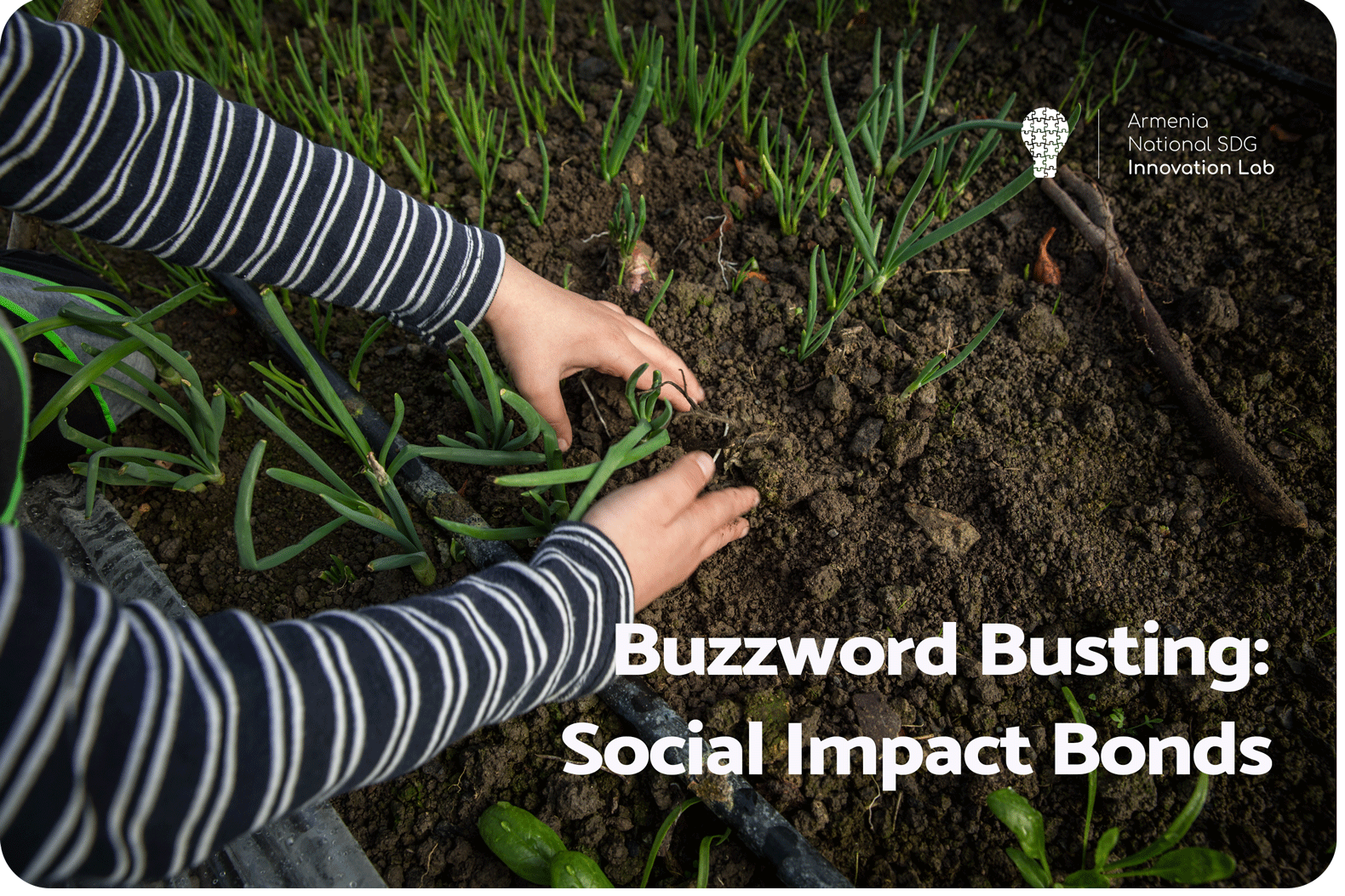As a National SDG Innovation Lab, we’re in the front seat driving SDG implementation in Armenia and are seeing this “capital” challenge up close. For the past few months, we’ve been trying to find meaningful ways to involve businesses and investors in Armenia’s development pathway.
One of the most promising directions is Social Impact Bonds, more commonly referred to as SIBs. SIBs have been called “incomprehensible and irrelevant” in some quarters and as a “game-changer” inothers — an indication that the jury is still out. However, one thing that does seem to create agreement is their complexity.
As such, your friendly neighbourhood SDG Innovation Lab has provided a useful SIB primer for the uninitiated. Here it goes:
SIBs for dummies
In simple human language, an SIB is a multiparty agreement based on the idea of “pay for success”. The Government identifies a social problem (in general, that it has either not been efficient in solving or is lacking the necessary resources to solve). Then service providers who could efficiently solve the social problem are found, along with investors, who are willing to pay the service providers upfront. The Government only pays the investors back when the pre-defined success indicators are reached or in other words pays only for success.
Alright, maybe even this explanation was not that simple, try the diagram (How social innovation financing works. Illustration by Dan Stiles?)

Not working either? Maybe an example would do a better job:
There is a problem of practical farmers’ training in Armenia, which affects the quality of products, making them less competitive in the market against imports and even less so for export. This could be fixed by introducing the farmers to simple, yet effective methods of quality assurance. To do so, the SIB will need to bring together: (i) the Government, (ii) a service provider (in this case an organization to design and conduct effective farmer trainings), (iii) an investor willing to pay the service provider, with the promise to be paid back by the Government once there is evidence that the trainings have been successful in raising the quality of farmer products.
Disclaimer: This is, of course, the over simplified version of the story, but helps the cause of busting the buzzword!
What is good about SIBs?
- SIBs can help find the most efficient solution — as payment is based on success, only those service providers that have what it takes to reach the success indicators will get involved.
- SIBs can de-risk Government investments — Government only pays against results, this opens up room for trying out new solutions or unconventional methods.
- SIBs require thorough monitoring and evaluation — yes, we always report on programs, but this one actually requires very careful impact assessment, since the payment is set against clear success metrics.
What is not so good about SIBs?
SIBs are very complex and time-consuming — think about the number of parties involved in this performance agreement and the amount of time and efforts required to bring all the parties on the same page… exactly!
Our experience so far
Considering that to this point there have been only 100 or so SIBs designed and implemented worldwide, we realised that it is a very audacious endeavour to take on the design of not one, but two SIBs. But we still went for it, as we believe that this new generation of financial instrument for development can serve as a trusted interface to bring the private sector into the deal.
Currently we’re working on the design of two SIBs:
- Improving quality of agricultural education in cooperation with FAO Armenia.
- Improving learning outcomes of the IT sector in cooperation with UNICEF Armenia.
So far, we have managed to meet all stakeholders, gather data, study best international practices and are now polishing the designs that came out of the process.
We will keep “working out loud” and share with you the details of our SIB experience!




